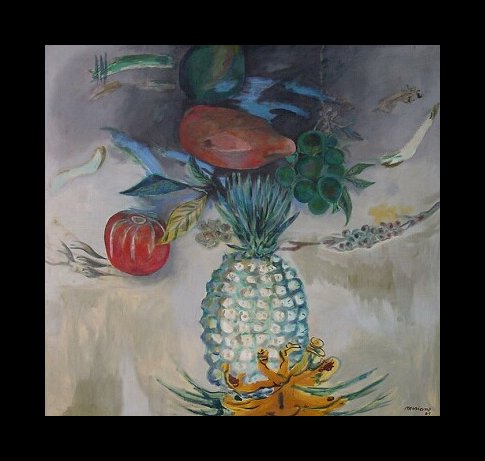Mariano Rodriguez (1912-1990)
Get a Rodriguez Certificate of Authenticity for your painting (COA) for your Rodriguez drawing.
For all your Rodriguez artworks you need a Certificate of Authenticity (COA) in order to sell, to insure or to donate for a tax deduction.
Getting a Rodriguez Certificate of Authenticity (COA) is easy. Just send us photos and dimensions and tell us what you know about the origin or history of your Rodriguez painting or drawing.
If you want to sell your Rodriguez painting or drawing use our selling services. We offer Rodriguez selling help, selling advice, private treaty sales and full brokerage.
We have been authenticating Rodriguez and issuing certificates of authenticity since 2002. We are recognized Rodriguez experts and Rodriguez certified appraisers. We issue COAs and appraisals for all Rodriguez artworks.
Our Rodriguez paintings and drawings authentications are accepted and respected worldwide.
Each COA is backed by in-depth research and analysis authentication reports.
The Rodriguez certificates of authenticity we issue are based on solid, reliable and fully referenced art investigations, authentication research, analytical work and forensic studies.
We are available to examine your Rodriguez painting or drawing anywhere in the world.
You will generally receive your certificates of authenticity and authentication report within two weeks. Some complicated cases with difficult to research Rodriguez paintings or drawings take longer.
Our clients include Rodriguez collectors, investors, tax authorities, insurance adjusters, appraisers, valuers, auctioneers, Federal agencies and many law firms.
We perform Mariano Rodriguez art authentication, appraisal, certificates of authenticity (COA), analysis, research, scientific tests, full art authentications. We will help you sell your Mariano Rodriguez or we will sell it for you.
Born in Havana and drawn to art at a young age, Mariano Rodriguez was one of the many Cuban painters of his era that tried to break away from institutionalized teaching. He rebelled against many modern trends in his art, and considered himself more of an Expressionist than an Abstract artist.
At the age of 24, Rodriguez left for Mexico and studied under muralist Rodriguez Lozano. It was after this trip that he devoted himself entirely to painting, and eventually became a professor at the Escuela Libre de Pintura. Rodriguez’s trip to Mexico had a deep impact on his painting, not only in methods, but in content. Many have compared Rodriguez’s work to that of modern Mexican’s of the day, but in truth, he struck out in a direction all his own.
If there is one theme that is prevalent through all of Rodriguez’s work, then it is roosters. He began to paint his roosters (or gallos) in the 1940s and they became very popular and are highly recognizable. If you own a Cuban painting of a rooster that was created from the 1940s-80s, chances are it is a Rodriguez. His rooster Rodriguez named simply “Gallo” is a perfect example of his style.

He would paint his roosters in almost any medium from oil to gouache and watercolor, as well as ink on paper or canvas. Rodriguez’s series of roosters was the product of his inspiration from Picasso and Matisse. It was also his answer to painting Cuban themes, as roosters are a very recognizable figure in that country, and are actually a symbol of power.
One of the striking things to notice about Rodriguez is that he would sign his works “Mariano” and then the year he painted his work along with his signature. This was certainly due to the fact that he had a common last name. His signature is almost always visible on the front of his works, especially in his later compositions. There is also a Guatemalan painter named Mariano Rodriguez, but his paintings are very abstract and are painted at a birds eye view. From a distance, the Guatemalan Rodriguez’s paintings look like a mosaic, and could never be confused for the Cuban artists work.
Though Rodriguez has been pegged as painting in a Mexican style, his color palates and themes are also true to his Cuban heritage. Tropical fruits, flowers and animals also dominate his oeuvre, as well as figure studies of women. Some of his fruit still life paintings take on an almost Surrealist edge, such as “De la Serie Frutas y Realidad”.

His Surrealist fruit images were a part of his “Fruit and Reality” series, in which he began in 1967. Sometimes Rodriguez would also paint groups of people in an abstract fashion, such as “Massas”.

Could this series of paintings of huddled masses be a social statement on Rodriguez’s part? This painting was a part of a series that he began in the 1980’s of groups of people, or masses. If you own a similar piece like this from Cuba, it could very well be a Rodriguez. These scenes were painted in a time of great social and political disturbance in Cuba, and their historical meaning far outweighs their artistic value.
Rodriguez also extends a social message in his painting “Mujere’s Llorando” (1943).
This painting truly shows his strength in the use of chromatics and his departure from the styles of other Cuban artists of the day. Rodriguez was revered in his day for his use of light and the way that he portrayed the human form, nature and wildlife.
Today, Rodriguez’s work is housed in museums in Ecuador, Colombia, Nicaragua, Argentina, Stockholm, San Francisco, Chicago, Paris and the Museum of Modern Art in New York. In his lifetime, Rodriguez won a number of awards for his exhibitions. His work lies somewhere between Matisse and Dali, but is all a product of his Mexican teaching and Cuban heritage. Do you think you own a painting by Mariano Rodriguez? If you do please contact us. We authenticate, certify and appraise the value of all paintings by Mariano Rodriguez. We are the Mariano Rodriguez experts.
Reviews
1,217 global ratings
5 Star
4 Star
3 Star
2 Star
1 Star
Your evaluation is very important to us. Thank you.
